In the late 50s, the US Navy began work on what was known as the Fleet Ballistic Missile (FBM), going from program start to the first operational cruise of the USS George Washington carrying Polaris missiles in only four years. But the Polaris A1 missiles that Washington carried were essentially prototypes, and something better would be needed to arm the 40 SSBNs that would follow her into service.
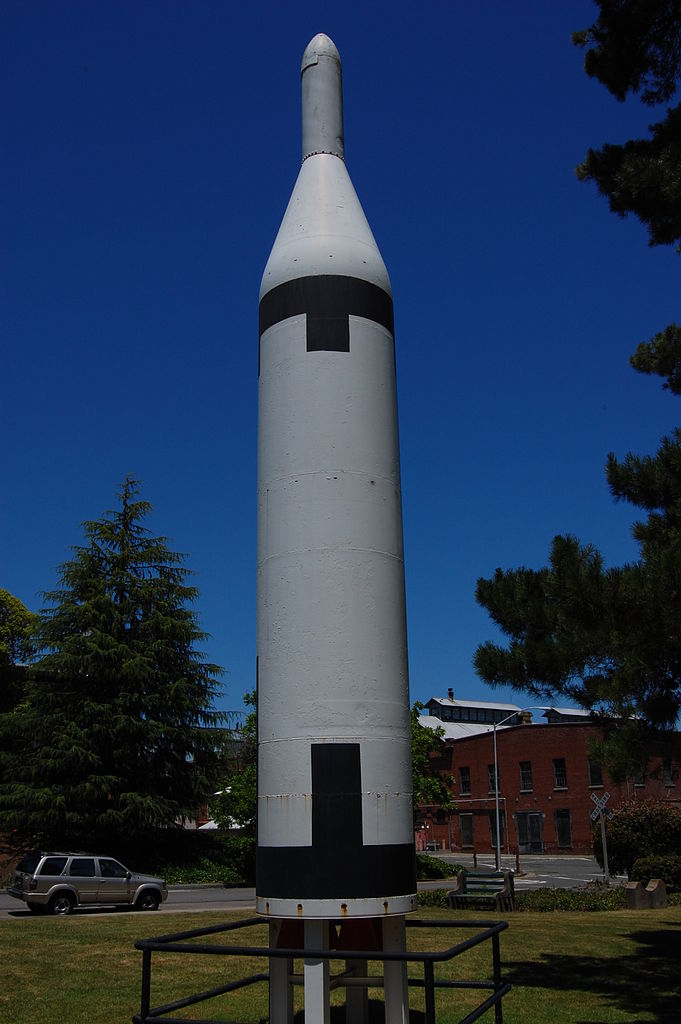
Polaris A2 missile
Work on the follow-on Polaris A2 was well in hand even as George Washington began her first patrol. One major focus was improved reliability, to make the missile actually something that could be adequately maintained by a submarine's crew in operational service. Another upgrade was an improved second stage, stretched 30" to bring the range up to the 1,500 nm that was originally desired. This greatly increased the patrol area, bringing Moscow within range not only from boats in the Norwegian Sea, but also the Mediterranean and Aegean. Patrols in the Mediterranean began in 1963, essentially replacing the Jupiter missiles withdrawn from Turkey as part of the deal that ended the Cuban Missile Crisis. Pacific patrols began the next year, with Polaris replacing the Regulus submarines on patrol off the Soviet Pacific coast.
Polaris A2 became operational in mid-1962 on the Ethan Allen, which announced this capability on May 26th with the only all-up test of an American ballistic missile ever conducted. The Frigate Bird shot of Operation Dominic saw the submerged Ethan Allen launch an A2 at a target on Christmas Island a thousand miles away. The missile arrived within 2 km of the target and the W47 functioned perfectly, despite being fitted with the troublesome mechanical safing system.1 A little over a year later, the Partial Test Ban Treaty would prohibit any further atmospheric testing.
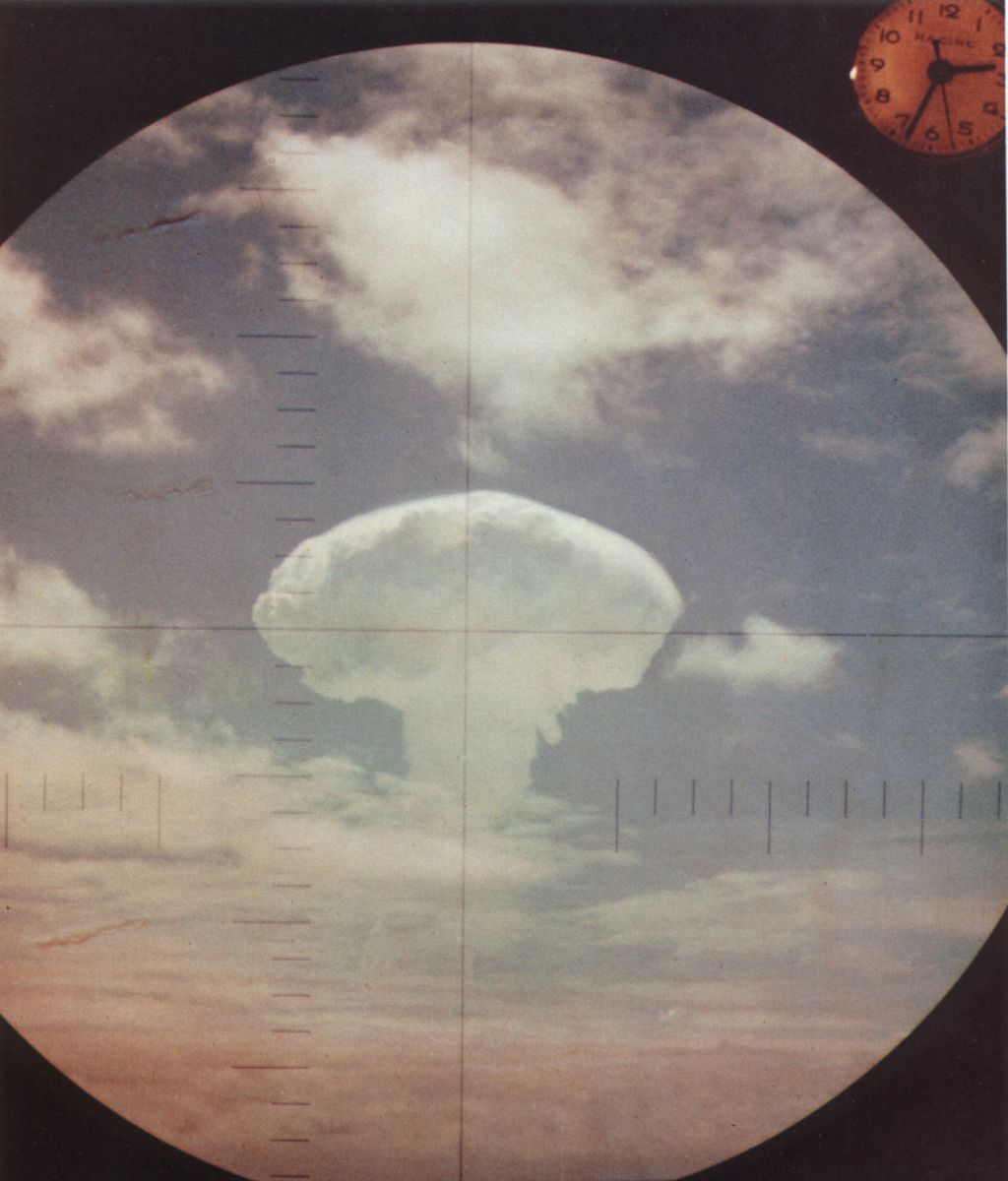
Dominic Frigate Bird
Besides making the submarines harder to find, the increased range had a second effect, making the job of Soviet Anti-Ballistic Missile (ABM) defenses much harder. A site under construction near Leningrad had been clearly positioned between the Baltic and Moscow, but the new missile could attack from many points of the compass. To further improve effectiveness in the face of ABM defenses, a set of penetration aids including decoys, chaff, and jammers was developed for A1 and A2 missiles. However, reliability issues and reduced range meant that it wasn't widely used.
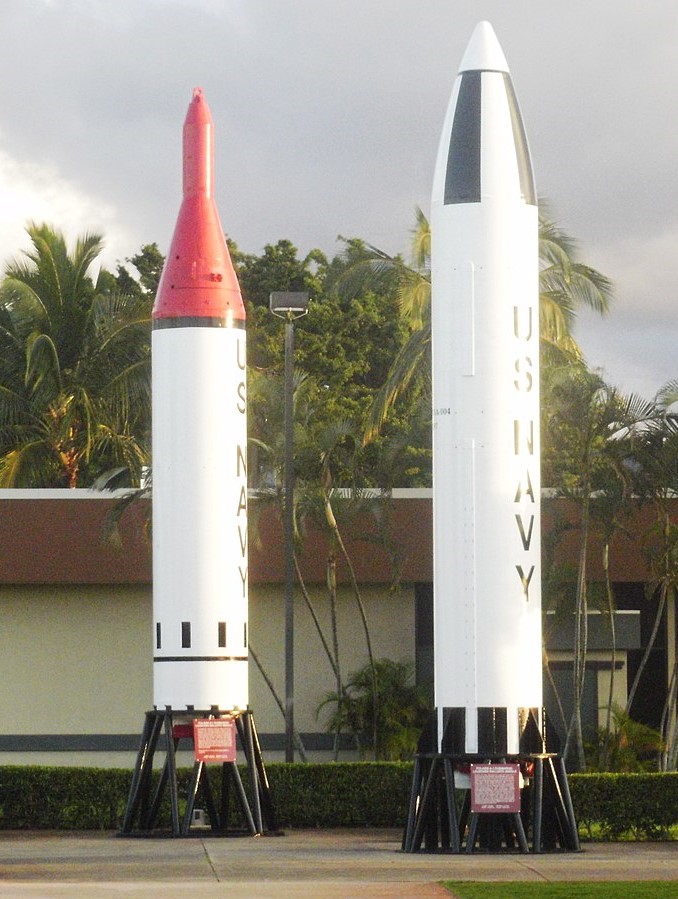
Polaris A1 (left) and A3 missiles together
To improve performance against ABMs, and to generally increase the effectiveness of the FBM system, the SPO began development of a new missile, which was called Polaris A3 despite sharing very little with the A1 and A2 missiles. Further developments in missile technology, including better propellants, fiberglass motor casings, and the replacement of the jetevator steering system with gimballed nozzles (on the first stage) and Freon injection (second stage), allowed the missile to reach out to 2,500 miles, giving it capability against targets in the western Soviet Union from anywhere in the Northeast Atlantic. The guidance system was also upgraded, allowing the CEP2 to fall to only about .5 nm despite the increased range. Onboard the submarines, the initial system of punch cards computed ashore would have been overwhelmed by the much larger patrol areas opened by the increase in range, and it was replaced by an onboard computer that could continually compute the relevant trajectories.
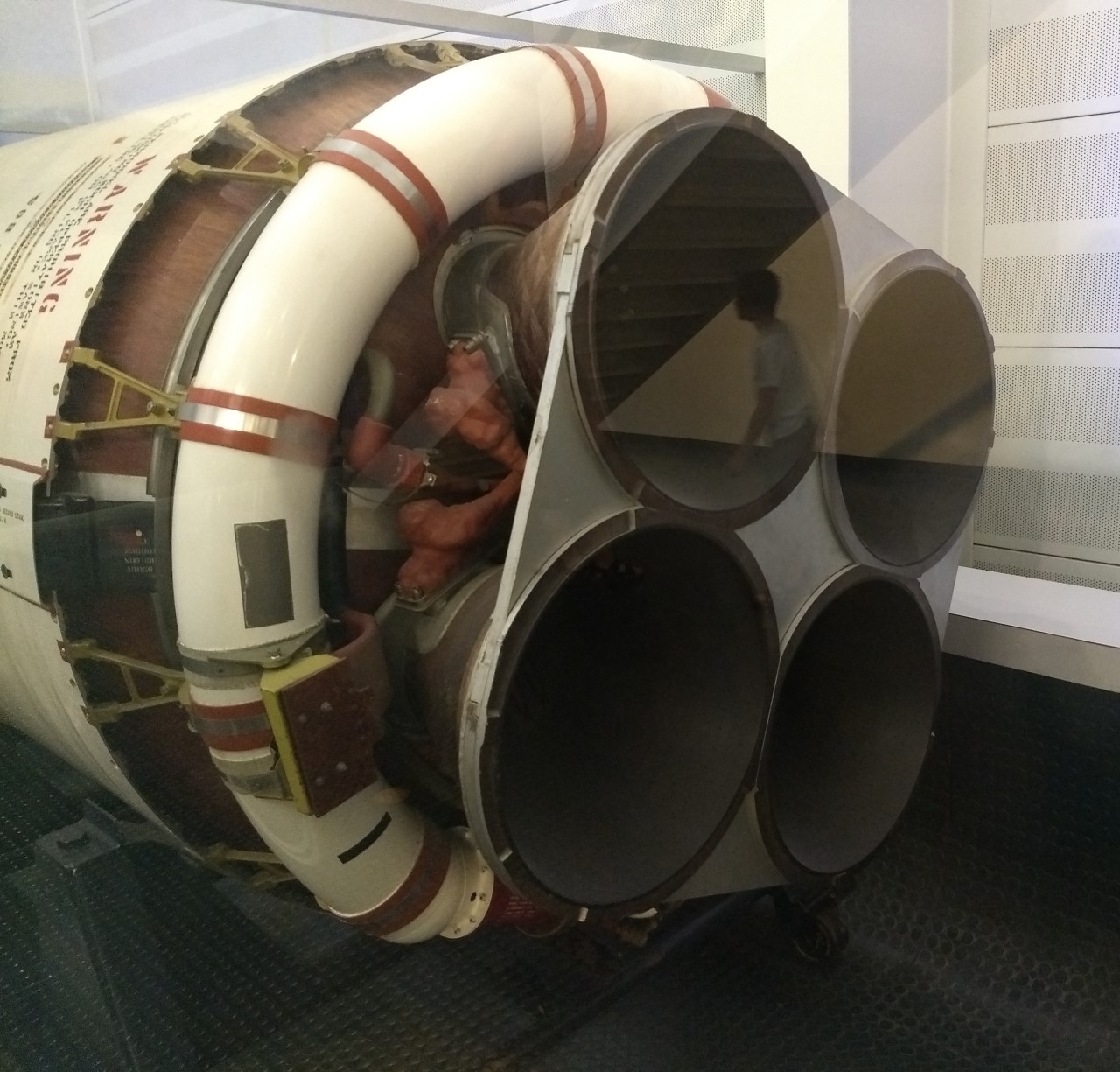
The engines of a Polaris A3, showing the Freon injection system
Even more revolutionary was the payload, the first ever use of multiple reentry vehicles on a ballistic missile. Instead of the troublesome W47, the A3 would carry a trio of 200 kT W58s. These would land in a triangular pattern, probably 3-5 km apart, that would provide an area of 7 psi overpressure equivalent to a single 1 MT weapon.3 This was still very much a counter-city weapon, as 7 psi is perfect against industrial targets, but not particularly good at killing hardened ones. This decision was largely driven by the 1958-1961 testing moratorium. The initial plan for the Polaris A3 had been to use a single 1 MT warhead, but no weapon of the appropriate yield, size and weight had been tested. Instead, the SPO chose to go with a design that had been tested at 200 kT after it realized that the three-warhead configuration would produce the same effects. When the appropriate velocity was reached, each warhead would be separated by a single solid motor, removing the need for a thrust termination system. The RVs would arrive about 1 second apart, which would give the initial neutron pulse time to dissipate, removing the danger of nuclear fratricide, while making sure that the warhead wasn't disrupted by the blast wave from the earlier detonation. This reduced the vulnerability of the weapon to ABMs even further, as each RV would have to be separately attacked, at least after it had entered the atmosphere. The system was considered effective enough that while decoys and other penetration aids were considered, they were never fitted to American A3s.
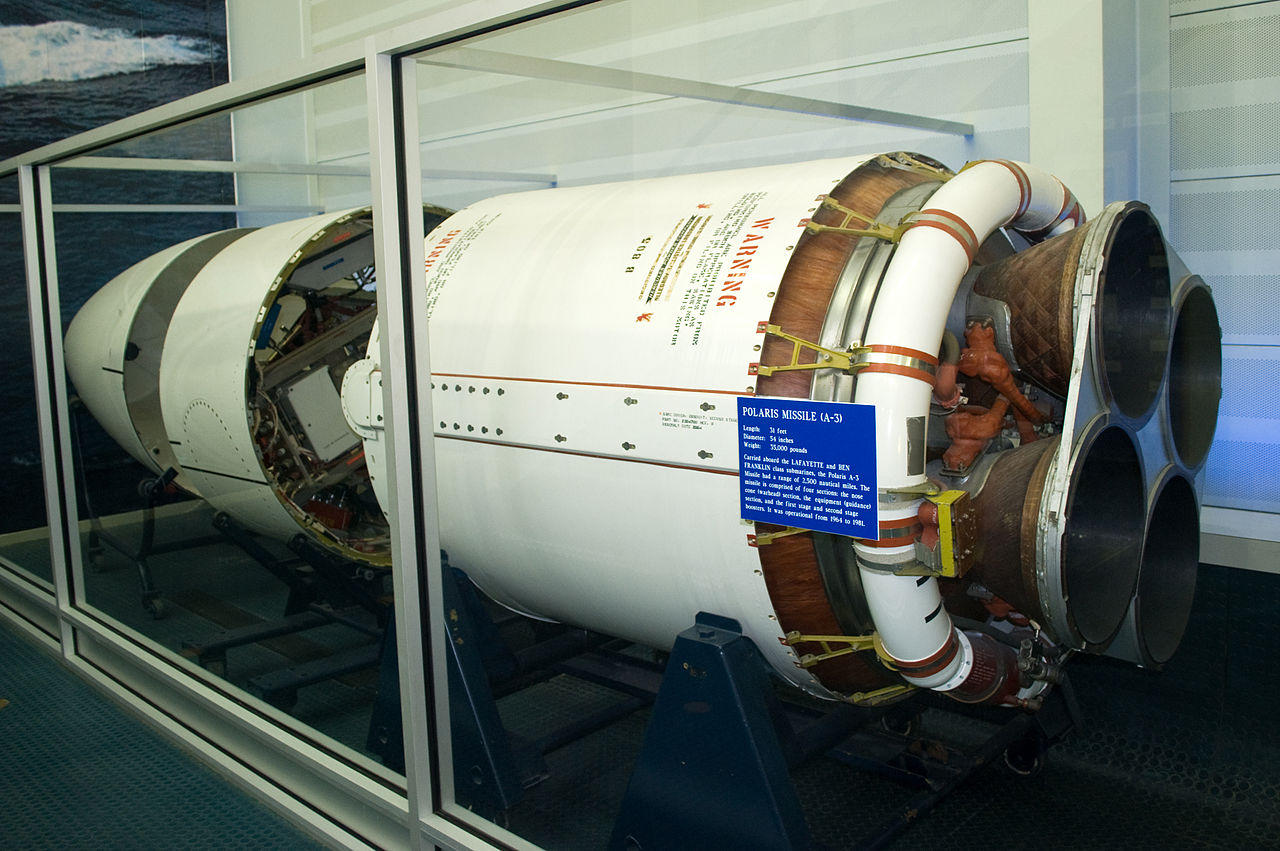
The upper stage and guidance section of a Polaris A3
Obviously, new RVs were needed for the new missile. Each RV, including warhead, weighed only 360 lb, and the previous heat-sink method of dealing with the heat of reentry was abandoned in favor of using a nylon-phenolic ablator that would burn away and take the heat with it. This was necessary because the greater range of the A3 meant that it would be exposed to more heat on entry, which would have required a bigger heat sink. The new RVs also had improved aerodynamics, which meant that instead of being subsonic on reaching the ground, they would be doing something like Mach 18, a major challenge for any ABM system. There was serious discussion of fitting some A3s with a single warhead and an improved guidance system for attacking harder targets, challenging the Air Force's monopoly on the so-called "counterforce" mission, attacking Soviet nuclear forces instead of cities. Ultimately, this was never done, as the Navy was not particularly eager to take on the Air Force on the matter.
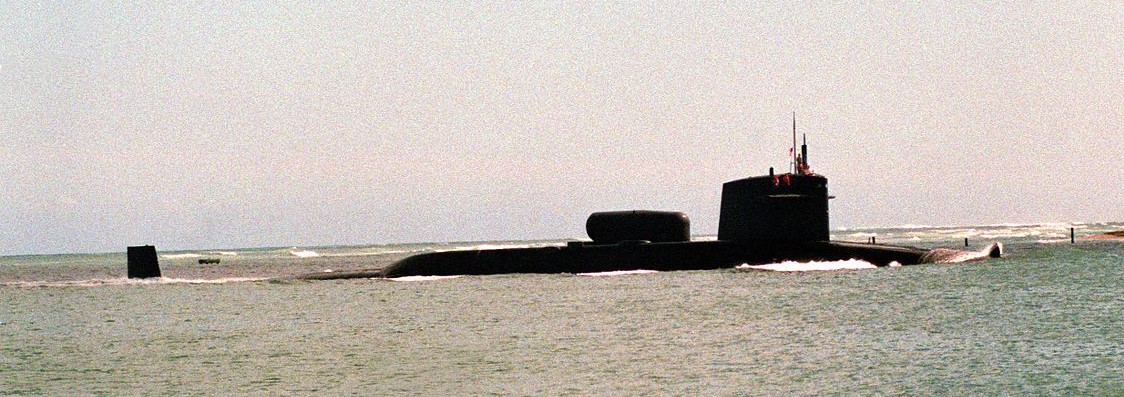
USS Sam Houston with dry deck shelter after her conversion to special forces transport
The Polaris A3 first went to sea in 1964 aboard the Daniel Webster, and began to replace the earlier missiles. Polaris A1 was retired in 1965, when the Abraham Lincoln was converted to A3s. The A2 model, as befitted a much more reliable and longer-ranged weapon, lasted almost another decade before it was retired in 1974. By this point, the Polaris A3 was already being phased out in favor of the follow-on Poseidon C3 missile, which used up the volume available in the larger-diameter tubes on the Lafayette class. The launch tubes of the George Washington and Ethan Allen classes were too small for the new missile, and those 10 boats continued to carry Polaris A3 until withdrawn from service under the SALT II agreement starting in 1979. Some of these boats were decommissioned immediately, while others had their missiles removed and were reclassified as SSNs, nicknamed "slow attack".4 Two of the Ethan Allens, Sam Houston and John Marshall, were converted to serve as transport submarines for special forces, a role they filled until the early 90s, when the role was handed over to later SSBNs that had been rendered obsolete by the end of the Cold War.
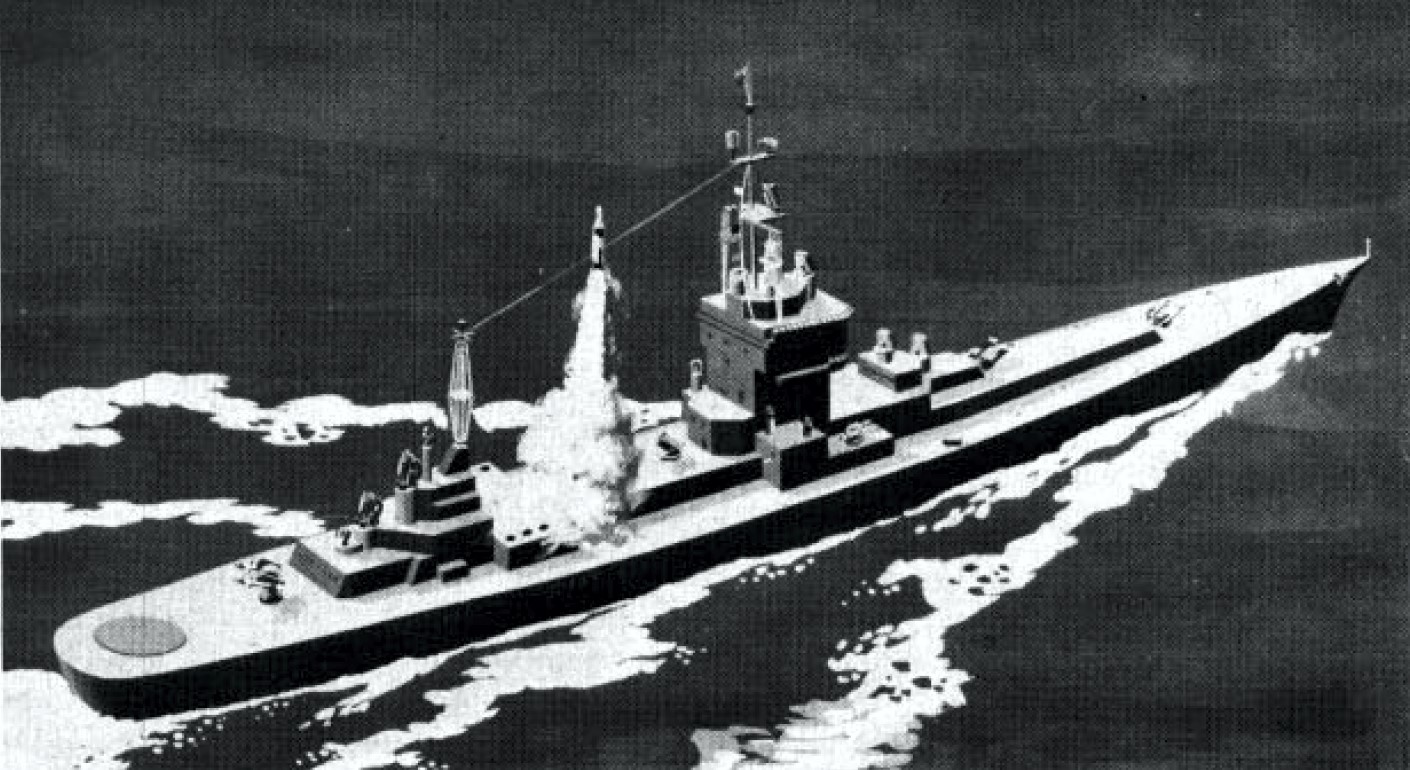
Long Beach launches a Polaris
While Polaris was only ever deployed on SSBNs, there were several proposals to make use of it from other platforms. In the early days of the FBM program, it was expected that the first batch of Jupiters would go to sea aboard surface ships, either converted merchant ships or possibly guided-missile battleships. When Polaris began, this work took a back-burner to the SSBN effort, but studies continued, probably with an eye towards using these missiles on specifically naval targets instead of strategic ones.5 Plans came in two main strands: vessels dedicated to the ballistic missile mission and ordinary combatants that carried Polaris as one part of their armament. The former category saw discussion of merchant ships for the job, with some plans to have them blend in with normal ship traffic, as well as the conversion of WWII-era Juneau class cruisers with 16 missiles.6 The later category got slightly further. The nuclear cruiser Long Beach was built with space and weight reserved for a Polaris battery amidships7 while the Italians went further and actually installed a quartet of tubes for Polaris on their cruiser Giuseppe Garibaldi.8 This was part of a plan known as the Multi-Lateral Force, which proposed creation of a common NATO nuclear arsenal under joint control, using Polaris missiles mounted on ships with crews drawn from throughout NATO. This ultimately fell apart due the reluctance of Britain and France to give up their independent deterrents, and the Italians began work on an SLBM called Alfa, which is suspiciously similar to Polaris. It was cancelled when Italy joined the Non-Proliferation Treaty in 1975.
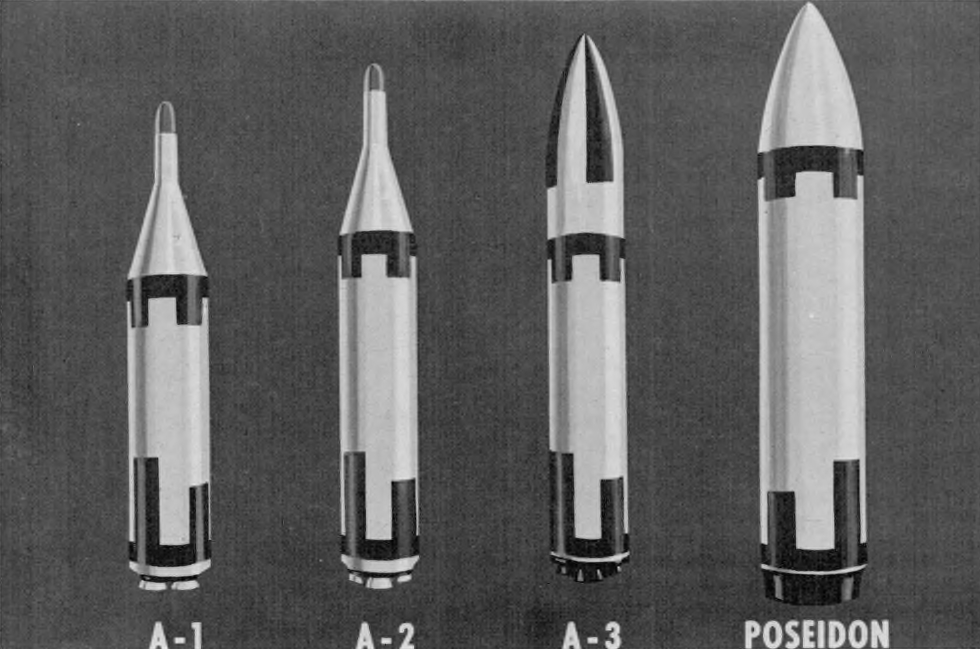
The Polaris-Poseidon family
But the death of the MLF didn't meant that Polaris wasn't going to see service outside the USN. In 1963, the US agreed to sell the missile to Britain, and it formed the backbone of the British nuclear force through the 1990s. We'll take a look at how that came about next time.
1 Many A2s were equipped with a later version of the W47 that had a yield of around 800 kT, but the one used in Frigate Bird had the early warhead and yielded 600 kT. ⇑
2 Circular Error Probable, the radius within which half of the missiles are expected to land. ⇑
3 Note that the MRV (multiple reentry vehicle) used on the Polaris A3 is very different from the MIRVs that became common in the 70s. All three Polaris warheads were aimed at the same target, and would always come down close to each other, instead of being used against separate targets in the same general area. ⇑
4 A pun on "fast attack", a term used for normal SSNs. ⇑
5 Presumably, this was before the guidance limitations were fully appreciated. ⇑
6 One source even claims that there was discussion of fitting up to 30 Polaris to the Forrestal class carriers, in areas around the deck edge where they wouldn't interfere with flight operations. I find the prospect dubious at best. ⇑
7 Sources differ on if it was intended to be 4 or 8 tubes. ⇑
8 Garibaldi conducted a number of tests, including some that appear to have been first-stage tests, but was never fitted with the operational missiles. ⇑

Comments
I can't find (in two seconds of Googling) what Freon injection does to steer a rocket. Can you say more?
You squirt some kind of gas into the side of the rocket nozzle and it impinges on the exhaust in such a way that the thrust vector points off-axis. Compared to a vectoring nozzle, there's much less to go wrong while it's sat in a launch tube for years.
Basically, it pushes the exhaust away from the point of injection. You dump extra mass in, and that's going to change the flow in the nozzle.
It looks like Freon injection is a subcategory of liquid injection, and its purpose is to make a symmetric rocket exhaust controllably asymmetric. Which means that you can design your nozzles for symmetry and use controlled liquid injections as desired to get some side force, instead of trying to rotate the nozzle or put some sort of deflector in the hot exhaust stream.
https://apps.dtic.mil/dtic/tr/fulltext/u2/268731.pdf
Obligatory: "M.L.F\will scare Brezhnev\I hope he's half as scared as I!"
Will you be covering Poseidon in a later part, or another article entirely?
This is the last part of the main Polaris series. The next part will be written whenever USNI gets me the new Friedman book. Poseidon will be covered separately after that.
Update. Poseidon will be coming first, and the post on British Polaris will probably be coming in 6-7 months, as the Freidman got delayed to September.
The Frigate Bird shot of Operation Dominic saw the submerged Ethan Allen launch an A2 at a target on Christmas Island a thousand miles away. The missile arrived within 2 km of the target and the W47 functioned perfectly, despite being fitted with the troublesome mechanical safing system.
I assume this isn't the inhabited Christmas island that is part of Australia.
@Doctorpat: No, it was Kiritimati, the Christmas Island which is part of Kiribati. The British also used Kiritimati for Operation Grapple, their hydrogen bomb tests.
However, Kiritimati is also inhabited, with current population of over 6,000 making it the most populated island in Kiribati. There's an amusing range of village names including London, Paris, Poland and Banana.
Kiritimati had no native population- before nuclear testing started, there were about 250 people who had moved there to work on a copra plantation. The civilian population were evacuated for the first Grapple test but not for later tests, and military personnel remained on the island for all of them. Kiritimati is a reasonably large island- about 30 miles long- and all of the villages are on the NW coast, while the tests were on or around the SE tip of the island.
Except for Tarawa having about ten times the population.
For how to pronounce kiritimati read ti as s.
Shouldn't this be the western USSR?
Yes, yes it should. Fixed.